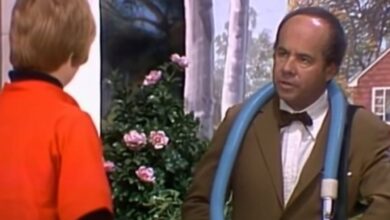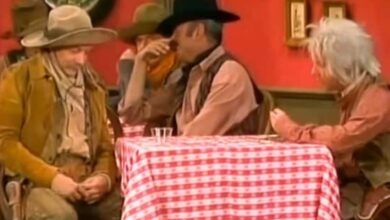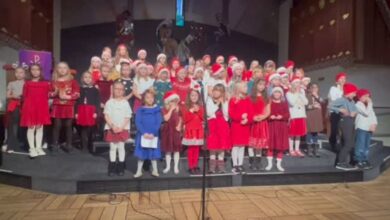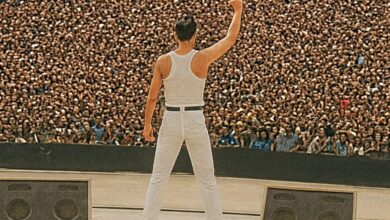Paul McCartney’s Triumphant Cavern Club Return with Gilmour and Paice Reignites Rock ‘n’ Roll Magic in 1999
After the heartbreaking loss of his beloved wife Linda in 1998, Paul McCartney turned to the music that had first lit the fire in his soul—raw, high-octane 1950s rock ’n’ roll. The result was Run Devil Run, his eleventh solo studio album, released in October 1999. Fueled by grief, nostalgia, and creative resurgence, the album was a powerful tribute to the music that shaped his youth. It featured twelve roaring covers from the golden age of rock and three original compositions that channeled the same spirit and swagger.
To fully capture the energy and attitude of those early rock records, McCartney didn’t settle for just any backing band—he recruited some of the best. Pink Floyd’s iconic guitarist David Gilmour joined the project, adding grit and texture. Mick Green of The Pirates, whose aggressive rhythm style had long inspired McCartney, brought a razor-sharp edge. On drums, McCartney enlisted Deep Purple’s Ian Paice, whose thunderous precision provided the backbone. With additional support from keyboardist Pete Wingfield and accordionist Chris Hall, McCartney was surrounded by musicians who could match his passion beat for beat.
But McCartney had more in mind than just a studio release. He wanted to bring Run Devil Run to life on stage—and when it came to choosing the right venue, the answer was as clear as day. The Cavern Club in Liverpool wasn’t just a place where The Beatles had played; it was where they had been forged. The gritty little basement on Mathew Street was where the world had first seen the power of their sound, and McCartney knew that returning there would carry a symbolic weight few other stages could offer.
The date was set for December 14, 1999. It would be McCartney’s first performance at the Cavern since The Beatles’ final gig at the original club in August 1963. Much had changed since then—the original venue had been demolished in 1973, and a reconstructed version now stood nearby. Though technically not the same stage, the new Cavern captured the spirit and the sweat of the original. For McCartney, it was close enough. “I’m going back for just one night as a tribute to the music that has always thrilled me and always will,” he said in advance of the show. “I can’t think of a better way to close out the century than with a rock ’n’ roll party at the Cavern.”
Only 300 lucky fans were able to witness the event in person. The demand was so overwhelming that tickets were distributed through a tightly controlled lottery system. Those who got in found themselves steps away from legends, packed into the same kind of tight, brick-walled space where Beatlemania was born. The BBC recognized the magnitude of the event and captured the performance for broadcast, airing it on both BBC Radio 2 and BBC1 to reach millions unable to attend.
From the first note, it was clear this wasn’t a nostalgic trip through the motions—it was a genuine rock show, delivered with raw energy and urgency. McCartney tore into tracks like “Honey Hush,” “All Shook Up,” and “Blue Jean Bop” with the same enthusiasm he had as a teenager, only now with decades of mastery under his belt. Gilmour’s guitar howled and wept through solos, while Paice’s drumming gave the music an unstoppable drive.
The chemistry between McCartney and his band was undeniable. They weren’t just playing songs—they were channeling a time when rock was young and rebellious. McCartney didn’t speak much between numbers, but when he did, it was with warmth and gratitude. He paid tribute not only to the music but to the musicians who came before him—the pioneers like Gene Vincent, Little Richard, and Carl Perkins, whose spirit ran through every track.
One of the most electrifying moments of the night came when McCartney launched into “I Saw Her Standing There.” The song, one of the earliest Beatles classics, exploded through the tiny venue like a firecracker. The crowd erupted, some in tears, others singing every word. For McCartney, it was a return to where it all began—and for the fans, it was a once-in-a-lifetime connection to a piece of living history.
Yet it wasn’t just the Beatles tunes that stole the night. The Run Devil Run originals—particularly the title track and “Try Not to Cry”—held their own against the classics. Written in the wake of personal tragedy, these songs carried an emotional weight that added new dimension to the performance. They proved that McCartney wasn’t simply revisiting the past—he was using it to push forward, to heal, and to create anew.
Critics praised the show not only for its musical tightness but for its authenticity. This wasn’t a polished arena performance; it was something raw, visceral, and deeply human. The setlist, packed with rock ‘n’ roll standards, might have seemed old-fashioned on paper, but in McCartney’s hands, the songs felt alive, dangerous, and necessary.
In the days that followed, footage from the concert circulated widely, reigniting appreciation for McCartney’s roots and reminding a younger generation of where rock’s heartbeat had once thundered loudest. The Cavern Club show became the subject of documentaries, articles, and fan discussions, earning a revered spot in McCartney’s live legacy.
The concert also marked the symbolic end of the 20th century. As 1999 drew to a close, many artists looked back over a century of sound—but few did so with the same intimacy and passion as McCartney. His Cavern Club return wasn’t a farewell—it was a celebration, a renewal, and a defiant declaration that rock ‘n’ roll was still alive and well.
Though he’s since played countless stages around the globe, McCartney’s 1999 Cavern performance remains one of his most legendary. Not for its size, but for its soul. It wasn’t just another gig. It was a homecoming. A tribute. A time machine built of guitar strings and memory.
For fans, musicians, and rock historians alike, that night stands frozen in time—a rare moment when the past and present collided in perfect harmony. McCartney didn’t just revisit the Cavern. He reawakened it. And in doing so, he reminded the world why rock ’n’ roll will never die.





